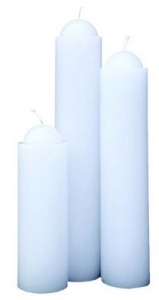Candles And LCDs: More Alike Than Meets The Eye

By Mary Rose Thomas-Glaser
At the end of a long day, have you ever relaxed with a candlelit dinner and watched a movie on television? It probably never crossed your mind that the paraffin wax in the candle and the liquid crystal display of the television are closely connected. How is it possible that two extremely different products can, in fact, have a lot in common?
Paraffin Wax: The Big Picture
A by-product of crude oil refining, paraffin wax is odorless, tasteless, unreactive, insoluble and excellent for storing heat. These characteristics make paraffin extremely versatile and suitable for use in many consumer and industrial products alike — from candles to cosmetics to lubricants and paints. Until recently, research on paraffin and its applications has been focused strictly on the macroscopic level.

A Closer Look At Crystallization
But researchers at the Physics and Material Science Research Unit of the University of Luxembourg decided to take a new approach and look at paraffin crystallization at the microscopic level. Professor Tanja Schilling and associates Muhammad Anwar and Francesco Turci at the university, viewed individual paraffin molecules and studied the molten wax crystallization process, making a surprising discovery.
Before the wax molecules moved into their final positions in the crystallization process, they aligned in a very similar manner as molecules used to create liquid crystal display (LCD) technology. LCDs are widely used in a variety of products including television screens, computer monitors, calculators and watches. “This research will be of value to the plastics industry as the polymers, which make up plastics, are long-chain versions of the molecules in wax,” says Professor Schilling.
Most plastic products manufactured today are created using injection molding. Molten plastic is forced into a mold where it hardens into the configuration of the mold. Findings by Professor Schilling, Anwar and Turci provide valuable insight into the molecular crystallization process that can be used to help control defects in the plastics molding.
Extension Questions
- What are liquid crystals, and how are they used to create electronic displays?
- When was paraffin wax discovered? What is its chemical formula? What were some of its early uses, and how is it used today?